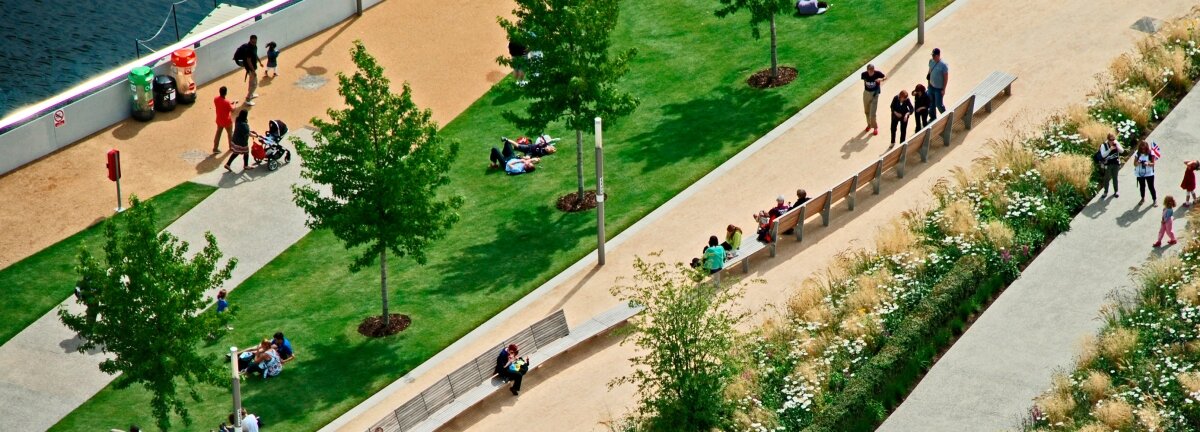Whose responsibility is inclusive design?

It's essential that built environment and design professionals step up and take greater responsibility for inclusive design.
Designing inclusive environments should be seen as the ultimate goal in design, not a barrier to it. To design beautiful level entrances and welcoming external environments should be every designer and architect's dream job. But at the moment accessibility is all too often seen as a bolt-on. Design professionals are talented, skilled people but they aren't always great at putting people at the core of the design process - at being inclusive. There are of course many of them that see the bigger picture, but unfortunately they are not the majority. It's time for built environment and design professions to take greater responsibility for creating accessible environments for everyone.
The built environments that we are creating risk excluding people.
I came to the CAE from an architectural practice and it seemed like a perfect fit. But very quickly I realised I had entered an entirely different profession and the lack of real inclusivity in the built environment became apparent to me. Within days of starting at CAE I found myself 'access assessing' everywhere I went - looking for the accessible toilets, appraising entrances and trying to find ramps. I would see women with buggies and people in wheelchairs struggling to navigate over coir mats- those rough doormats outside hotels and public buildings that are impossible to wheel over in a straight line, or even worse, steps leading to an accessible toilet. All too often my observations left me disappointed and 16 years later, although a lot of progress has been made, I’m still wondering about a lot of these things.
The built environments that we are creating risk excluding people. It means that some members of our society have to make plans that would equal the arrangements for a military campaign just to go about their day-to-day activities. For example, most of us don’t have to think too much about finding a public WC when we go out. But this is often a huge concern for some people. In 2014 people are still being changed by their carers on the floor of a public toilet, because there aren’t enough loos that they can use. Even today 'making do' remains a reality for many people. In my opinion this simply isn't good enough.
Inclusivity needs to be at the core of the design process... Meeting building regulation standards is not enough because people’s perception of what is acceptable is constantly changing.
Ultimately the client or owner of a building may be held legally responsible for inclusivity and access. That is as it should be because the client is the one who has to manage the building and no designer can control how they do that. But the designer has a big responsibility too and in many cases they simply aren't taking it.
Inclusivity needs to be at the core of the design process from the very beginning. Architecture practices should be employing Access Consultants, not to work for them, but to work for their clients. This should protect their clients from future law suits. Meeting building regulation standards is simply not enough because people’s perception of what is acceptable is constantly changing. Today our older citizens want and rightly expect, an active older age. Younger disabled people are also unwilling to accept that they cannot do this or that, or go here or there, and are demanding social justice, their rights to inclusion.
In the long run legislation is not the answer, the law can only do so much. Education and awareness amongst the design community is what will make a difference. The new Built Environment Professional Education Project is a calling card from the government to designers, which will hopefully embed inclusivity into the education of all construction professionals.
Legislation is not the answer... Education and awareness amongst the design community is what will make a difference.
A more enlightened approach throughout the whole profession would result in many more examples of great inclusive design- and the examples that we have really are inspiring. Kew Palace by Purcell Miller Tritton is one such case where accessibility was core to the project – no small consideration in a listed building. Innovative landscaping of an area that used to be a cesspit allowed them to create ramps that were in keeping with the environment and building and gave everyone dignified access. Wheelchair users have access to all three floors of the building courtesy of a platform lift installed in a refurbished privy tower on the side of the building. Throughout the whole process they worked with an advisory group of disabled people who collaborated on and tested all stages of the design.
More designers and architects need to be willing and knowledgeable enough to follow these kinds of examples. They need to take up the challenge of accessibility and treat it as a core part of their process The most rewarding and successfully designed buildings and spaces are evidence of an inspired, skilled, informed and responsive creative process - one supported by cultural expectation and economic incentive, and not just a legal requirement.
Subscribe to our newsletter
Want to keep up with the latest from the Design Council?
